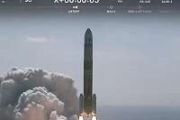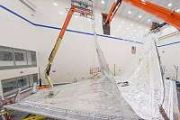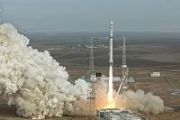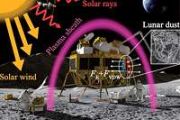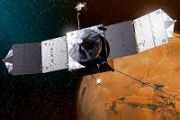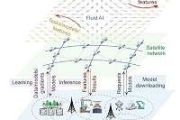
Copernical Team
Bern flies to Jupiter
 In spring 2023, the time will have come: The JUICE (JUpiter ICy moons Explorer) space probe of the European Space Agency ESA will begin its journey into space. The Jupiter system is almost 780 million kilometers away from the sun and an icy, dark world: The average temperature on the surface of the icy moons is below minus 140 degrees Celsius.
After an almost eight-year journey, JUICE will
In spring 2023, the time will have come: The JUICE (JUpiter ICy moons Explorer) space probe of the European Space Agency ESA will begin its journey into space. The Jupiter system is almost 780 million kilometers away from the sun and an icy, dark world: The average temperature on the surface of the icy moons is below minus 140 degrees Celsius.
After an almost eight-year journey, JUICE will Southern Launch receives further Government funding
 Australian spaceport and space mission provider, Southern Launch, has been awarded an Australian Space Agency Moon to Mars Grant for their mobile launch rail.
The almost $1 million grant will enable Southern Launch to design, construct, and commission a mobile launch rail that will be capable of launching sub-orbital vehicles ranging in mass from 20kg to 3,500kg. The mobility of the rocket
Australian spaceport and space mission provider, Southern Launch, has been awarded an Australian Space Agency Moon to Mars Grant for their mobile launch rail.
The almost $1 million grant will enable Southern Launch to design, construct, and commission a mobile launch rail that will be capable of launching sub-orbital vehicles ranging in mass from 20kg to 3,500kg. The mobility of the rocket ILC Dover becomes a provider of spacesuits for Boeing's Starliner
 ILC Dover, the leading provider of spacesuits since the Apollo era, has announced that it was selected to be one of two providers of Boeing's Ascent/Entry Suit (AES) for the company's Commercial Crew Program and has developed a bespoke AES spacesuit for CST-100 Starliner crews.
"We are proud to utilize our expertise to create a new AES for the Starliner spacecraft," said Patty Stoll, Presi
ILC Dover, the leading provider of spacesuits since the Apollo era, has announced that it was selected to be one of two providers of Boeing's Ascent/Entry Suit (AES) for the company's Commercial Crew Program and has developed a bespoke AES spacesuit for CST-100 Starliner crews.
"We are proud to utilize our expertise to create a new AES for the Starliner spacecraft," said Patty Stoll, Presi Axiom Space signs MOU with Italy to expand commercial utilization of space
 Axiom Space, a leader in human spaceflight currently building the world's first commercial space station, has signed a memorandum of understanding (MOU) with the Italian government to further their existing collaboration, including the potential for the development of space infrastructure integrated with the future Axiom Station. The agreement was signed by the President and CEO of Axiom Space,
Axiom Space, a leader in human spaceflight currently building the world's first commercial space station, has signed a memorandum of understanding (MOU) with the Italian government to further their existing collaboration, including the potential for the development of space infrastructure integrated with the future Axiom Station. The agreement was signed by the President and CEO of Axiom Space, Omnispace Spark-2 satellite launched into orbit
 Omnispace and Thales Alenia Space, a joint venture between Thales (67%) and Leonardo (33%), reports a successful launch and delivery of "Omnispace Spark-2" satellite into orbit. This marks the completion of the deployment phase of the "Omnispace Spark" program, the initial phase in the company's development and delivery of the world's first 5G capable satellite network.
Omnispace Spark-1,
Omnispace and Thales Alenia Space, a joint venture between Thales (67%) and Leonardo (33%), reports a successful launch and delivery of "Omnispace Spark-2" satellite into orbit. This marks the completion of the deployment phase of the "Omnispace Spark" program, the initial phase in the company's development and delivery of the world's first 5G capable satellite network.
Omnispace Spark-1, Astrocast acquires Hiber, accelerates OEM strategy.
 Astrocast, a leading global nanosatellite IoT network operator, has announced the signature of an agreement to acquire Hiber, a Netherlands-based, IoT-as-a-Service provider. Under the agreement, Astrocast agreed to acquire all of Hiber's shares in exchange for the issuance of new Astrocast shares, representing 16.5% of Astrocast's share capital, calculated prior to its previously announced publi
Astrocast, a leading global nanosatellite IoT network operator, has announced the signature of an agreement to acquire Hiber, a Netherlands-based, IoT-as-a-Service provider. Under the agreement, Astrocast agreed to acquire all of Hiber's shares in exchange for the issuance of new Astrocast shares, representing 16.5% of Astrocast's share capital, calculated prior to its previously announced publi NASA targets June 5 for redo of Artemis moon rocket dress rehearsal
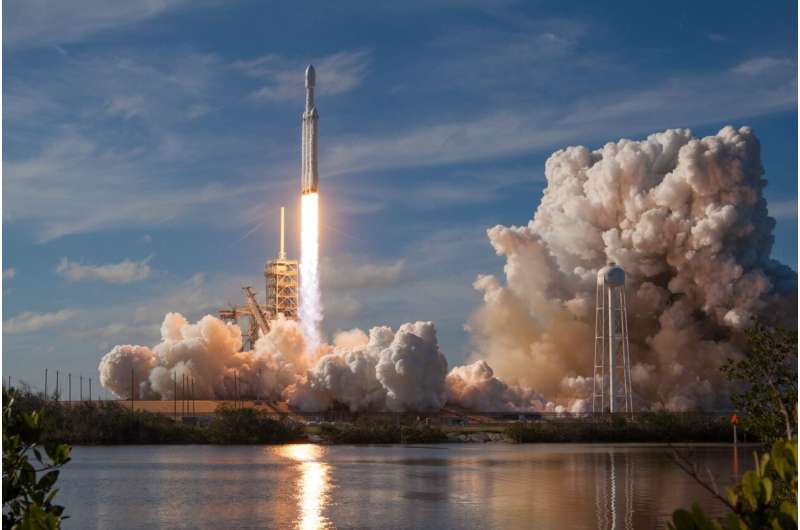
NASA discovered a bevy of headaches in its first three tries to run through a dress rehearsal countdown of the Artemis I moon rocket at Kennedy Space Center earlier this year. Now it's ready for attempt No. 4.
The agency is targeting a call-to-stations on Sunday, June 5, with a start of rollout at midnight, June 6, for the 4.4-mile, 11-hour journey from the Vehicle Assembly Building back to Launch Pad 39-B.
The 5.75 million-pound, 322-foot-tall combination of the Space Launch System, Orion capsule and mobile launcher first made the trip on March 18 on the crawler-transporter 2, after which NASA attempted several times to complete the goal of filling and draining the core and upper stage with 730,000 gallons of super-cooled liquid hydrogen and liquid oxygen while also simulating a countdown but without lighting the engines.
A series of pressure and valve issues stymied any completion of those tests and NASA managers decided to roll the lunar rocket back to the VAB. That allowed managers to solve the mystery of a malfunctioning 3-inch check valve in the upper stage that wasn't working on the pad.
Post-flight interview with Matthias Maurer | Cosmic Kiss
 Video:
00:07:10
Video:
00:07:10
Interview with ESA astronaut Matthias Maurer after the conclusion of his 177-day mission on the International Space Station. During his time in orbit, Matthias supported over 35 European experiments and even more international experiments on board. The outcomes of these experiments will advance our knowledge in areas ranging from human health to materials science, benefiting life on Earth and the future of space exploration. Other highlights included his spacewalk to improve and maintain the Space Station. More about the Cosmic Kiss mission: https://www.esa.int/cosmickiss
Revisit Living Planet Symposium: watch session replays

Revisit Living Planet Symposium: watch session replays
Tiny robotic crab is smallest-ever remote-controlled walking robot
 Northwestern University engineers have developed the smallest-ever remote-controlled walking robot - and it comes in the form of a tiny, adorable peekytoe crab.
Just a half-millimeter wide, the tiny crabs can bend, twist, crawl, walk, turn and even jump. The researchers also developed millimeter-sized robots resembling inchworms, crickets and beetles. Although the research is exploratory a
Northwestern University engineers have developed the smallest-ever remote-controlled walking robot - and it comes in the form of a tiny, adorable peekytoe crab.
Just a half-millimeter wide, the tiny crabs can bend, twist, crawl, walk, turn and even jump. The researchers also developed millimeter-sized robots resembling inchworms, crickets and beetles. Although the research is exploratory a 




